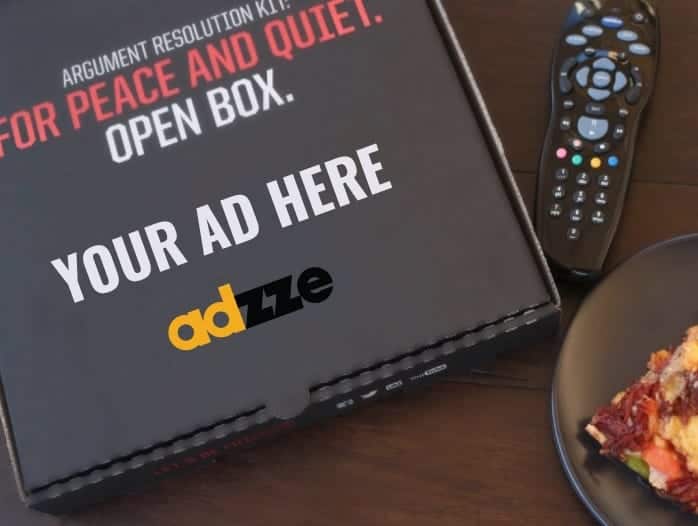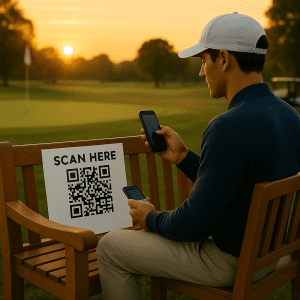Advertising on pizza boxes
The advertising industry is always changing as companies try to keep up with the shifting interests and behaviors of their target audience. Traditional out-of-home advertising methods, such as billboards, bus stops, and magazines, are facing increasing challenges in capturing consumer attention. As customers spend more time at home, there is a growing need for advertisers to find innovative ways to reach their audience directly within their personal spaces. This shift has prompted many brands to explore in-home advertising methods that deliver messages in a more targeted and effective manner.
One of the emerging trends in this space is the use of pizza boxes as advertising platforms. This unique approach allows advertisers to place their messages directly in the hands of consumers, leveraging the everyday act of ordering pizza to create a powerful and memorable brand experience.
Adzze has been adapting the advertising vehicles to a more sensitive message. The team has working on extending its capabilities to offer advertising vehicles that can reach the consumers at their safest place: at home. One of these concepts uses pizza boxes as advertising space. Think of this as small moving billboard that gets delivered at the consumer’s home.

How Does Advertising on Pizza Boxes Work?
The advertisement is printed on pizza boxes (or pizza toppers) and shipped to the pizzerias that the advertiser selected. The advertising pizza venues distribute to the consumers locally or they deliver at their homes. These venues are recognized pizza chains, so the advertiser has exposure to reputable brands. The pizza box ads get delivered in the hands of the consumers at their homes reaching on average 45 min of brand exposure. Sometimes the consumer leaves the pizza in the fridge generating additional exposure. On average, each Pizza Box Advertising venue delivers 2,000 pizza box ads per month with an estimate 1.8M impressions/month.
There are few reasons why marketers would choose Pizza Box Advertising instead of other traditional media vehicles:
High Brand Recall
Consumers are overwhelmed with digital ads that they see for a fraction of second and barely remember them. The attention span for digital ads is minimal to make them remember. The pizza box ads create a surprise effect making it more memorable. Studies show that this type of ads can evoke an 80% recall rate (8 out of 10 households individuals remember to see an ad on pizza boxes)
Low Cost
The budget used to place a 1 billboard on a high traffic highway for 1 month can be re-allocated to distribute 60,000 pizza boxes. This is sufficient to cover all households of a small town in the USA.
High Return on Advertising Spend
The average ROI is 2.5X. This means, for every 1 dollar the advertiser invested in a pizza advertising campaign, they received at least additional 2.5 dollars of sales.
The unconventional and unexpected nature of this type of advertising enables better perception and assimilation of the message. The ad is placed on the center of the pizza box generating guaranteed impressions. Sometimes the consumer leaves the pizza in the fridge generating additional exposure and more impressions. On average, each pizza venue delivers 2,000 ads per month with an estimate 1.8M impressions/month.

Advertising on pizza boxes can also be personal, interactive, and valuable. By placing QR codes or contests on them, marketers give consumers reasons to continue to interact with the pizza box. Advertising on pizza boxes means that your ad cannot be ignored because the only way to the pizza is through the box. Additionally, if the ad is well produced it will grab the attention of those in the household since it is there in front of them. Pizza box advertising can be targeting, creative, and inexpensive while still reaching the desired audience. For more details read our article Pizza Box Advertising: How effectively reach consumers at home
How Does it Compare to Other Media?
Digital media is great for reaching a specific set of consumers with targeted messages quickly. However, due to the short attention span of online users it delivers low impact and brand recall. Recently, a study from Bain & Company (3) found out that digital advertisement are less effective than traditional media in terms of getting consumers to remember it.
Recent studies by the research firm Lumen confirmed that only 9% of digital ads are viewed for more than a second (4). The study has used laptop-mounted eye tracking cameras on 300 consumers’ laptops to collect visual data on what they notice when they are online. During the study it were recorded 30,000 minutes of data, with evidence relating to around 15,000 digital ads.
Traditional TV viewing has dropped from 25 hours a week in 2011 to just shy of 16 hours a week in 2018 mainly by younger audiences. Nielsen’s 2018 Audience Report (5) found that Americans 18-34 averaged about 2.5h of traditional TV viewing per day – significantly less than in 2011. Pay-TV penetration is expected to fall to 70% by 2020.
Most of the consumer ignores TV commercials. Arris’ Consumer Entertainment Index surveyed 10,500 respondents from 19 countries, including the U.S., China and Brazil, on their media consumption habits. 84% of surveyed viewers admitted that they want to fast-forward through TV ads, and 60% of surveyed viewers would make the effort to find and download TV shows to avoid advertisements.
Adzze has been working with its clients to adapt to a more sensitive message. The team has been extending the capabilities to offer advertising options that can reach the consumers at their safest place: at home
Sources:
1. Luxton, S. What is called Ambient Advertising? Monash University. 2000
2. Gambetti, R. C.. Ambient Communication: How to Engage Consumers in Urban Touch-Points. California Management Review, 2010
3. Bain & Company, Online or Traditional, What’s is Better for Brands? Nov, 2016
4. Marketers Continue to Waste Money as Only 9% of digital Ads are viewed more than 1 Second. Lumen Research, 2016
5. Nielsen’s 2018 Audience Report. The State of Traditional TV: Updated With Q3 2018 Data Arris’ Consumer Entertainment Index






